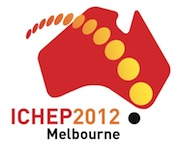Speaker
Dr
Mark James Tibbetts
(Lawrence Berkeley National Laboratory (US))
Description
ATLAS is a multipurpose experiment at the LHC proton-proton collider. In order to
reconstruct trajectories of charged particles, ATLAS is equipped with a tracking system built using different technologies, silicon planar sensors (pixel and micro-strip) and gaseous drifttubes, all embedded in a 2T solenoidal magnetic field. ATLAS physics goals require high resolution, unbiased measurement of all charged particle kinematic parameters in order to assure e.g. accurate interaction and decay vertex finding. The precision on track parameters critically depend on the systematic effects related to the alignment of the tracking system. In particular, small collective deformations due to sudden environmental changes (temperature, magnetic field) have to be identified and corrected in quasi-real time. The reconstruction of the primary interaction vertices is important to identify the hard scattering process and to measure the amount of pile-up interactions, while the reconstruction of so called secondary vertices is an important ingredient in the identification of jets originating from bottom quarks. The latter, referred to as b-tagging, is of great use in many high-profile physics analyses in e.g. the top quark, Higgs and new phenomena sectors to suppress background processes containing predominantly light-flavour jets. Performance of alignment, track and vertex reconstruction efficiency and resolution achieved in the 2011 and prospects for the 2012 LHC proton-proton collision runs will be discussed. We will present measurements of the b-tag efficiency carried out with jets containing muons as well as with b-jets from top quark decays. A novel measurement of the efficiency to b-tag jets originating from c-quarks, using a sample of jets containing D* mesons, will also be presented as well as two complementary measurements of the rate with which jets originating from light-flavour partons are mistakenly tagged as b-jets.
Author
Dr
Mark James Tibbetts
(Lawrence Berkeley National Laboratory (US))
